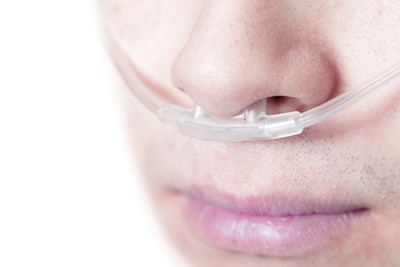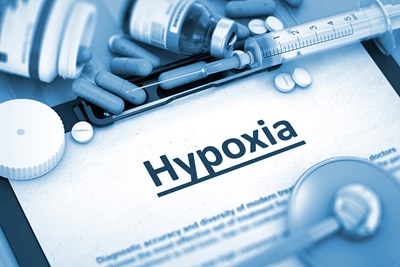Hypoxia is a medical condition that occurs when the body tissues experience a deprivation of oxygen—there are several causes and types of hypoxia. We’ve identified 10 terms that’ll help better understand this sometimes fatal condition.
- Polycythemia: irregularly high concentration of hemoglobin in the blood that’s due to either reduction of plasma volume or an increase in red cell count. Hypoxia can cause polycythemia; this is more often seen in chronic hypoxia when blood oxygen has been poor for a long period of time.
- Anoxia: is the medical term that’s used when there’s a complete depletion in a person’s level of oxygen. It’s considered a severe form of hypoxia.
- Hyperoxia: develops when tissues and organs are exposed to too much oxygen or higher than normal partial pressure of oxygen. Hyperoxia is different from hypoxia—hypoxia refers to an inadequate supply of oxygen, while hyperoxia refers to an excess supply.
- Hypoxemia: refers to an abnormally low level of oxygen in the blood, specifically oxygen deprivation in arterial blood. Hypoxemia can cause hypoxia because the blood isn’t supplying a sufficient amount of oxygen to the body.
- Hypoxic hypoxia: the most common type of hypoxia. It’s a result of an inadequate amount of oxygen supplied to the lungs. Some examples of hypoxic hypoxia include an obstructed airway, drowning, and reduced partial pressure (high altitudes above 10,000 feet).
- Altitude sickness: a common cause of environmental hypoxic hypoxia; recognized as a physical distress due to difficulty adjusting to low oxygen levels at a high altitude. It occurs more often when people, not accustomed to high altitudes, quickly descend from lower altitudes. Most cases are mild and feel similar to a hangover, but it can sometimes be life threatening.
- Stagnant hypoxia: caused by a reduction in blood flow. The decreased blood flow prevents sufficient blood supply to tissues. Stagnant hypoxia can cause cardiac problems when blood circulation is slowed, causing insufficient oxygen to be supplied to vital tissues and organs.
- Anemic hypoxia: occurs when the amount of functional hemoglobin is too small and the blood is unable to carry oxygen. It’s caused by hemorrhage, anemia, or poisoning such as carbon monoxide poisoning.
- Histotoxic hypoxia: occurs when cells aren’t able to take up or use oxygen from the bloodstream even though the supply of oxygen to such cells and tissues is normal. In other words, the cells have been poisoned—an example of histotoxic hypoxia is cyanide poisoning.
- Oxygen therapy: The main goal for treating hypoxia is to administer oxygen as quickly as possible. Oxygen will raise the concentration of oxygen being inhaled which raises the partial pressure of oxygen in the blood, reversing hypoxia. People with hypoxia may be treated in a hyperbaric chamber or given an oxygen mask to wear.



